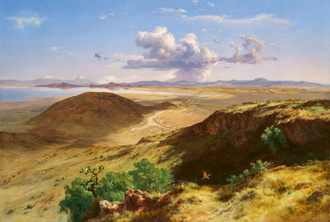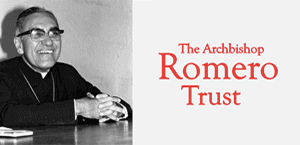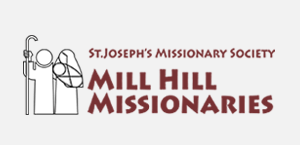Exhibition: Jose Maria Velasco - A View of Mexico

José María Velasco, The Valley of Mexico from the Hill of Santa Isabel (1877), Museo Nacional de Arte, INBAL, Mexico City. Image: Museo Nacional de Arte, Mexico City © Reproduction authorised by the Instituto Nacional de Bellas Artes y Literatura
The first major UK exhibition of celebrated 19th century Mexican artist José María Velasco is a revelation at the National Gallery. It coincides with the 200th anniversary of a diplomatic accord between Mexico and the UK.
During his lifetime Velasco exhibited in Europe and America, winning prizes for his art, but is no longer well known outside his native Mexico. The artist's stunning radiant landscapes, accompanied by an informative and beautifully illustrated book should rectify this oversight.
Born in 1840 he showed a prodigious talent for drawing aged twelve. He trained under Italian artist Eugenio Landesio in the European tradition, at the Academia de San Carlos in Mexico City. After graduating he became a lecturer and then leading professor at the institution, the first art academy in the Americas.
He was also a botanist and geologist, and his landscapes reflect this interest depicting historical and geological scenes. He was a founding member of Mexico's Natural History Society.
Velasco portrayed growing industrialisation as in his noted 'The Goatherd of San Ángel', 1863. Smoke billows in the background from a factory chimney, with livestock and an agave plant, symbolic of old Mexico in the foreground. Agave was used in traditional medicine but also in Tequila, the national drink.
His canvases of the Sierra and Mexico Valley reflect a warmth of light that echo Claude and even early Turner. In the foreground there's a nopal cactus and an eagle indicating the founding myth of Mexico City, according to Mexica, or Aztec tradition and featured on Mexico's national flag.
The exhibition relates over a thousand years of human occupation of Mexico from the ancient pyramids of Teotihuacán, and vast rocky promontories to basilicas with European incursion and growth of Christianity.
A deeply religious man, Velasco includes the famous Basilica of Our Lady of Guadalupe in his many depictions of Valley of Mexico from 1873. Earlier portrayals include indigenous people in the foreground but his famous epic depiction of 1877 is serenely atmospheric in its historical geographical realism. At the centre is the Marian Basilica at the foot of the Tepayac Hill which houses the image of the Virgin Mary imprinted on Juan Diego's tilma or cloak in 1531. The Virgin of Guadalupe was declared Queen of Mexico and Patron of the Americas.
Velasco resided at Villa de Guadalupe close to the basilica from 1884 until his death in 1912.
Pope Leo XIII was presented with two of his paintings. One by the Archbishop of Oaxaca of a view of the baroque Cathedral and a picture of the Valley of Mexico from the Hill of Santa Isabel presented by a representative of the Austro-Hungarian Empire who remained in Mexico after the execution of Emperor Maximillian, purchasing many of Velasco's works. Velasco is reputed to have painted the emperor in 1867 but the picture has not survived.
Velasco received a medal for his work from the emperor's older brother Franz Josef and painted a landscape depicting the place where Maximillian was killed with a small chapel over the site. Velasco presented the painting to the Hapsburg family and made a copy for himself.
He captured a rare view of the Pyramids of the Sun and the Moon before the excavations of 1880's of the Avenue of the Dead, painting on top of the Pyramid of the Moon. The sun is seen glowing poignantly through a bank of clouds on the horizon.
In 1910 he painted the mystical Great Comet of 1882 from memory and a probable sketch made at the time. It was a time of seismic historical change for Mexico and Velasco portrays a hauntingly portentous quality of the comet, reflected in the lake.
Towards the end of his life, Velasco painted on postcards. They are a freer style than his previous works, possibly influenced by paintings he'd seen on his European travels in 1889. Aged 50 he made his first and only visit overseas attending the Parisian Exposition Universelle, displaying 60 of his works. He was made a Knight of the French Legion of Honour at its conclusion. He also briefly toured Switzerland, Bavaria and Italy. In early December, he visited London for four days, presumably visiting the National Gallery as he had eagerly visited museums and galleries elsewhere.
He was fascinated by cloud formations and made notes on cloud forms such as cumulus and cirrus. His final work is an incomplete cloud formation, believed to have been started a few days before he died, although some claim it was begun on the actual morning of his death.
José María Velasco - A View of Mexico
Until 17 August Sunley Room
Admission Charge
For more details, see: www.nationalgallery.org.uk


















